Introduction to Illuminating Wood Countertops
Illuminating Wood Countertops represent a harmonious fusion of natural materials and innovative lighting solutions. These countertops are crafted from various types of wood, enhanced with integrated lighting systems that not only highlight the beauty of the wood grain but also serve functional purposes such as task lighting in kitchens or ambient lighting in living spaces.
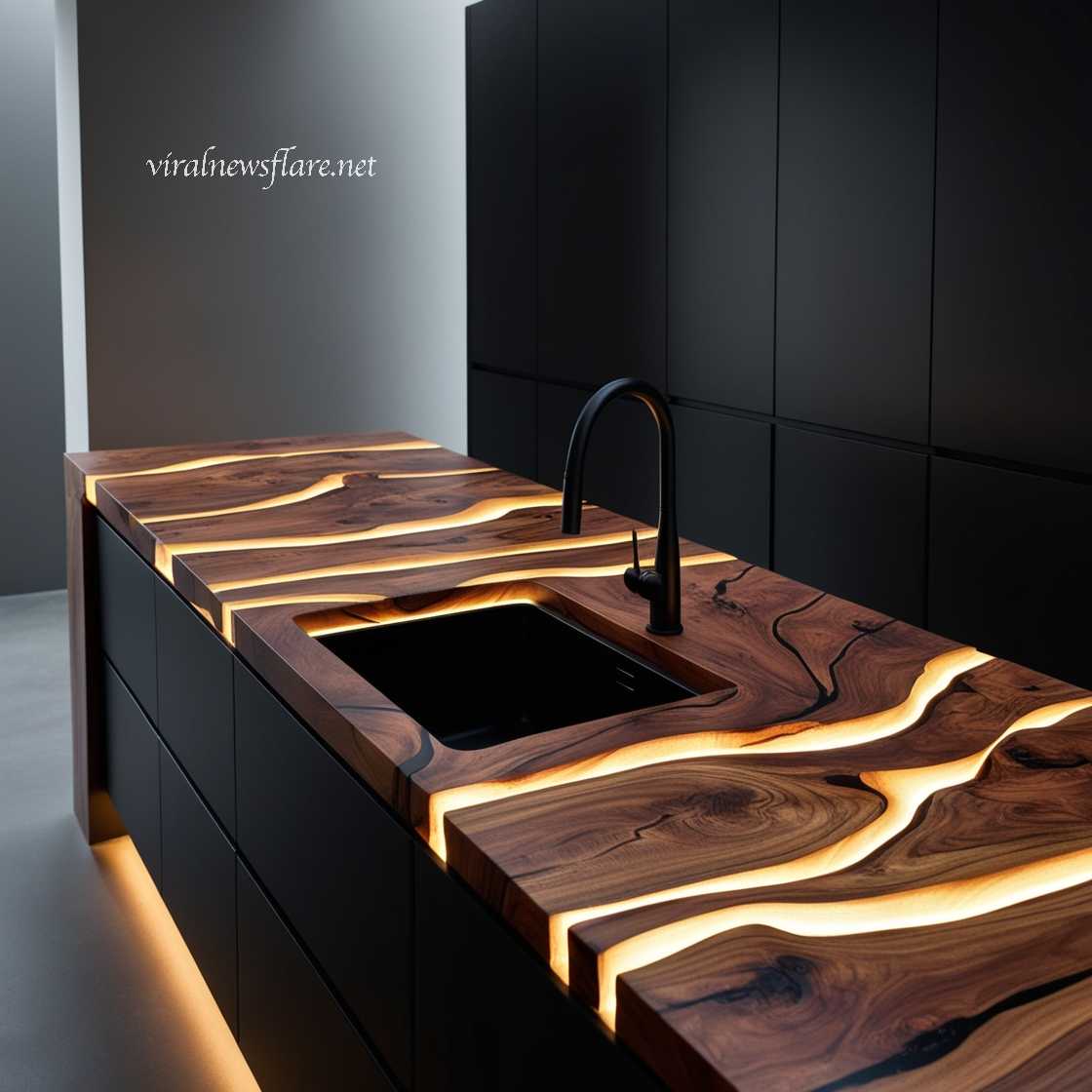
The concept of illuminating wood countertops stems from the desire to create spaces that are both aesthetically pleasing and highly functional. By integrating lighting directly into the countertop, homeowners and designers can achieve a unique look that sets the tone for the entire room while providing practical lighting solutions.
Benefits of Illuminating Wood Countertops
1. Aesthetic Enhancement
One of the primary advantages of Illuminating Wood Countertops is their ability to enhance the visual appeal of any space. The natural warmth and texture of wood are accentuated by the integrated lighting, creating a stunning visual contrast that adds depth and dimension to the countertop surface.
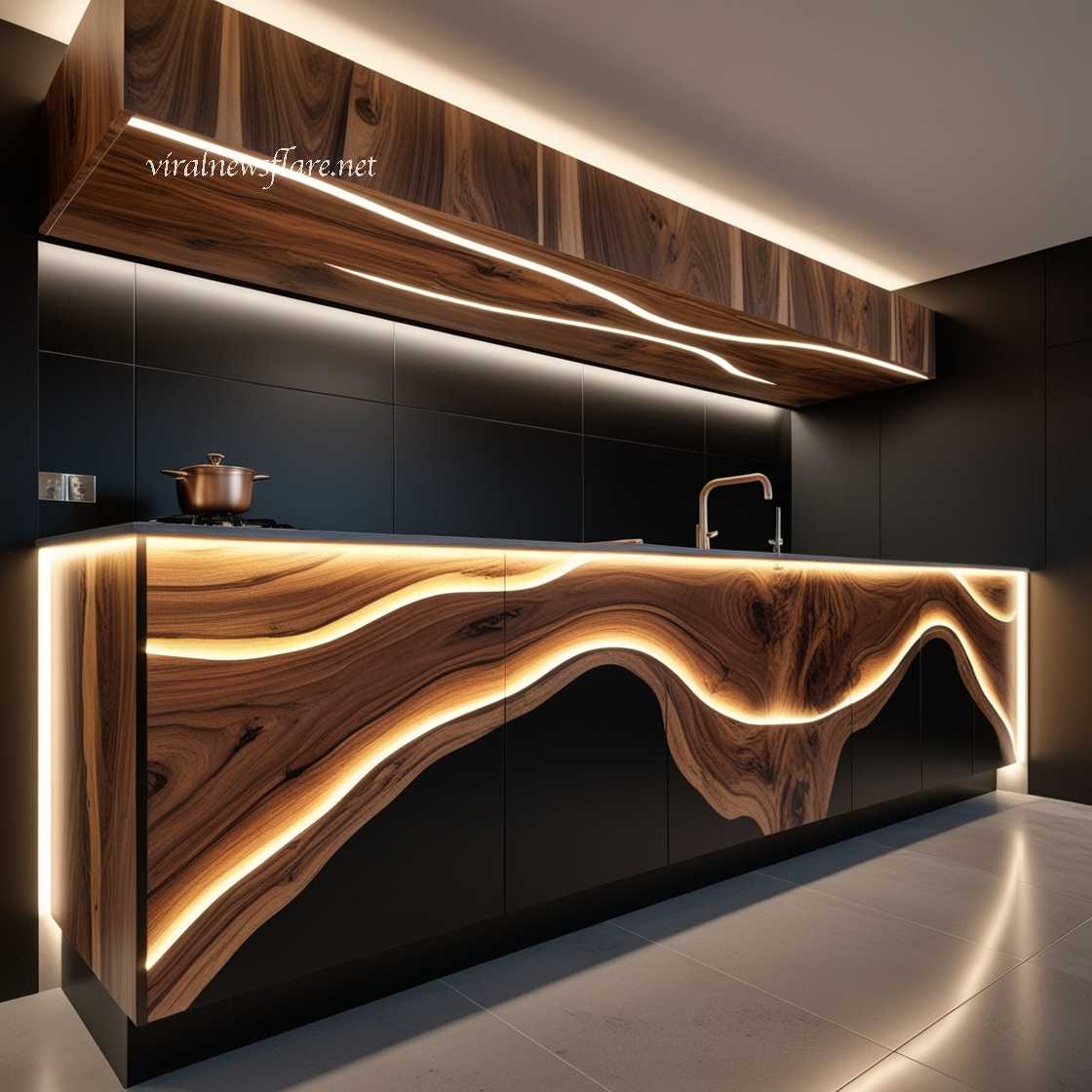
2. Functional Lighting
Beyond their beauty, these countertops provide functional lighting solutions. In kitchen settings, for example, integrated lighting can illuminate work areas, making food preparation more efficient and safer. In living areas, ambient lighting can create a cozy and inviting atmosphere.
3. Customization and Versatility
Illuminating Wood Countertops offer a high degree of customization. Homeowners can choose from various wood types, finishes, and lighting options to match their personal style and the overall design theme of their space. This versatility makes them suitable for a wide range of interior design styles, from rustic and traditional to modern and minimalist.
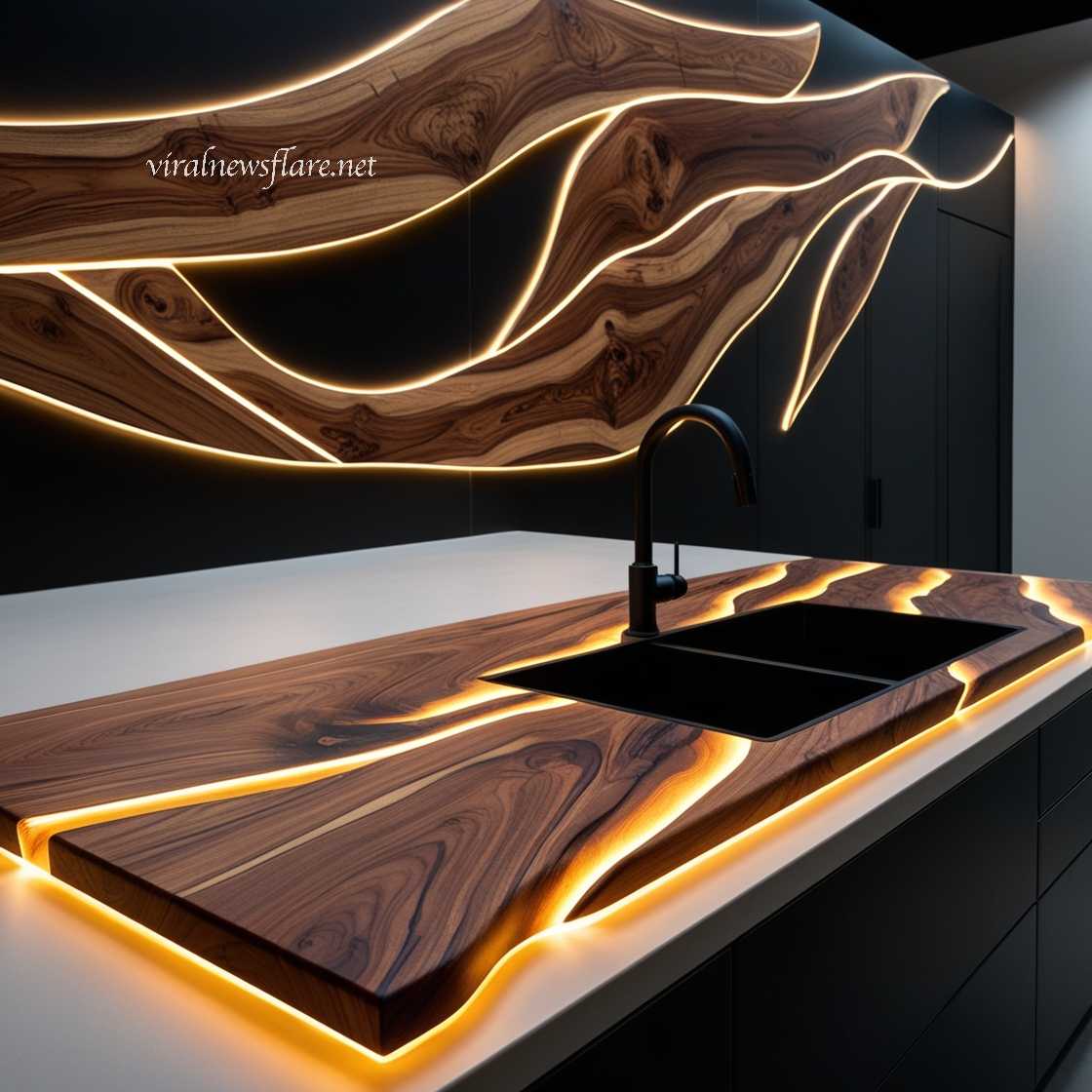
4. Energy Efficiency
Modern lighting technologies, such as LED lights, are often used in Illuminating Wood Countertops, making them energy-efficient. LEDs consume less power and have a longer lifespan compared to traditional lighting options, reducing both energy costs and the frequency of replacements.
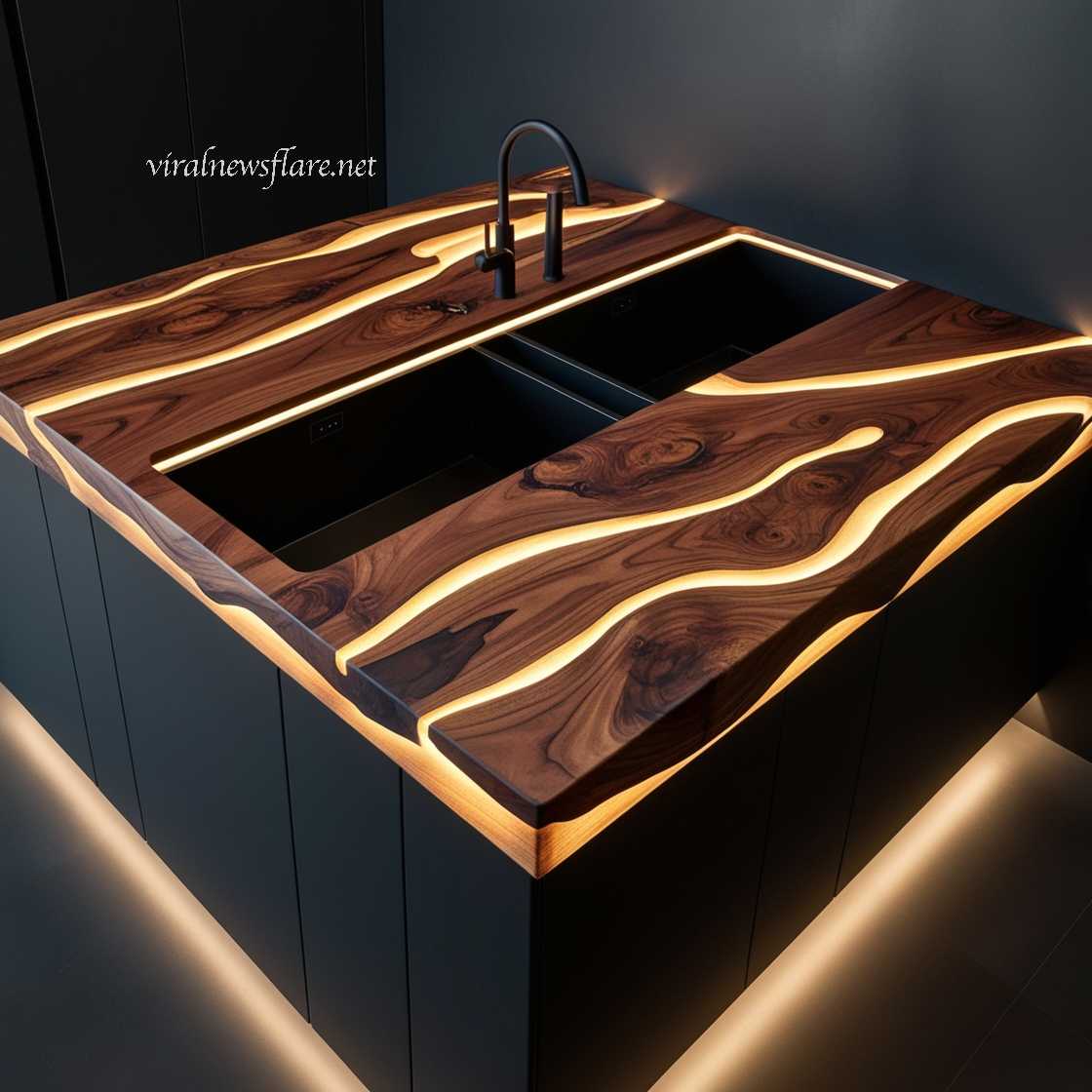
5. Increased Property Value
Investing in Illuminating Wood Countertops can enhance the overall value of a property. Their unique combination of natural materials and modern technology is attractive to potential buyers, making them a worthwhile investment for homeowners looking to increase their property’s marketability.
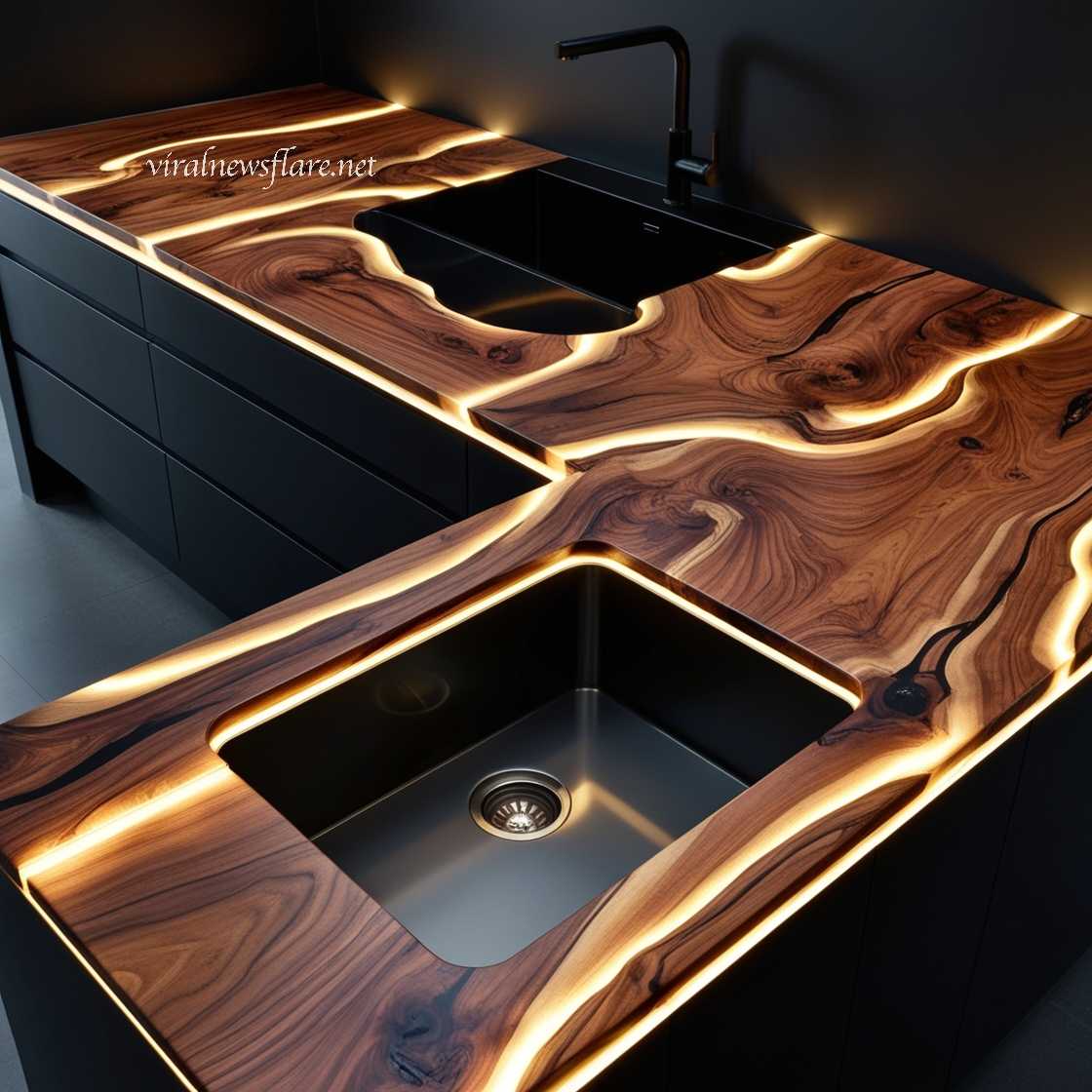
Design Possibilities and Aesthetic Appeal
1. Highlighting Wood Grain
The integrated lighting in Illuminating Wood Countertops is strategically placed to highlight the natural grain and patterns of the wood. This not only emphasizes the beauty of the material but also creates captivating shadows and light play, adding a dynamic element to the countertop’s appearance.
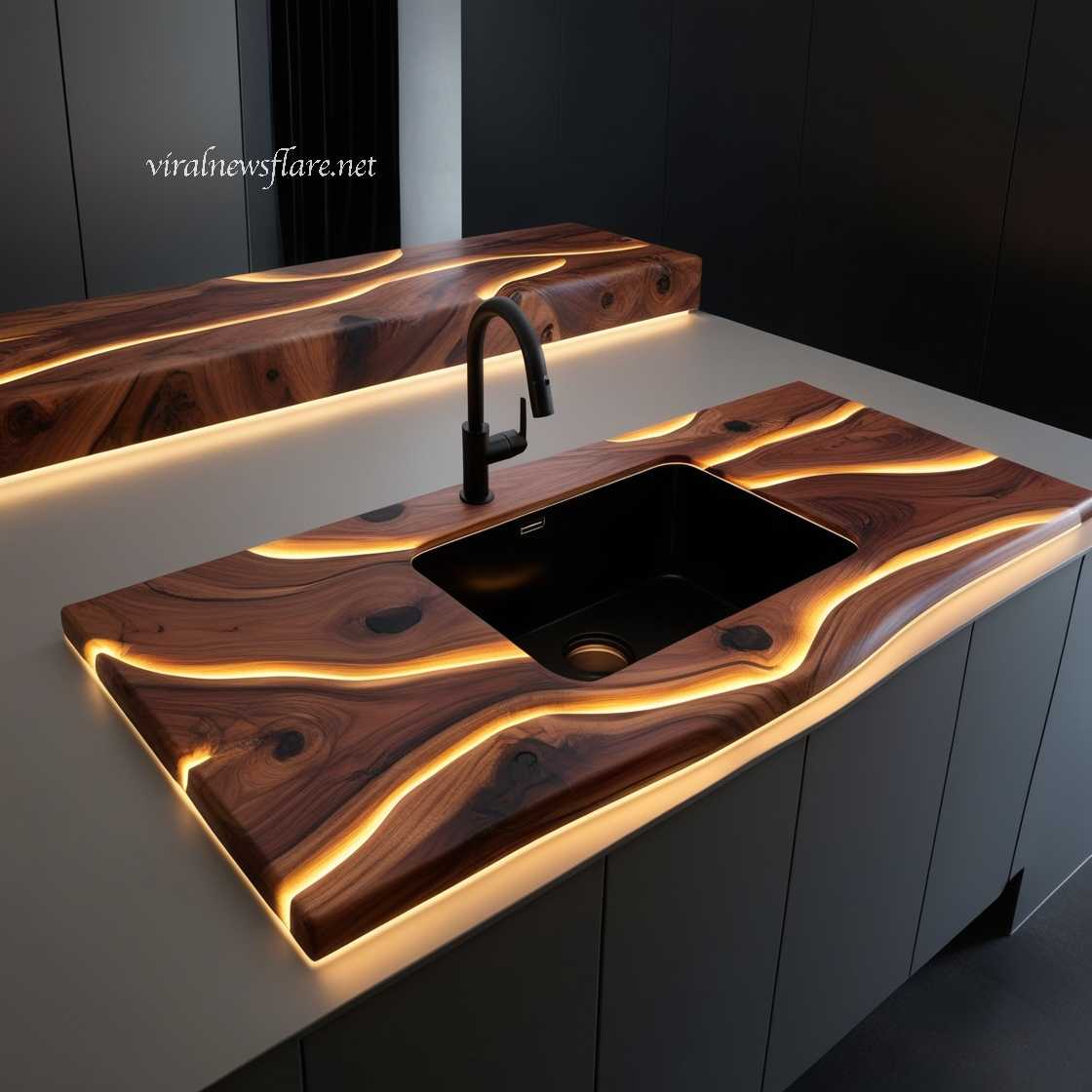
2. Color Temperature Selection
The choice of color temperature in the lighting can significantly impact the mood of the space. Warm white lights can create a cozy and inviting atmosphere, while cool white lights can give a more modern and sleek appearance. Some designs even allow for adjustable color temperatures, providing flexibility to suit different occasions and preferences.
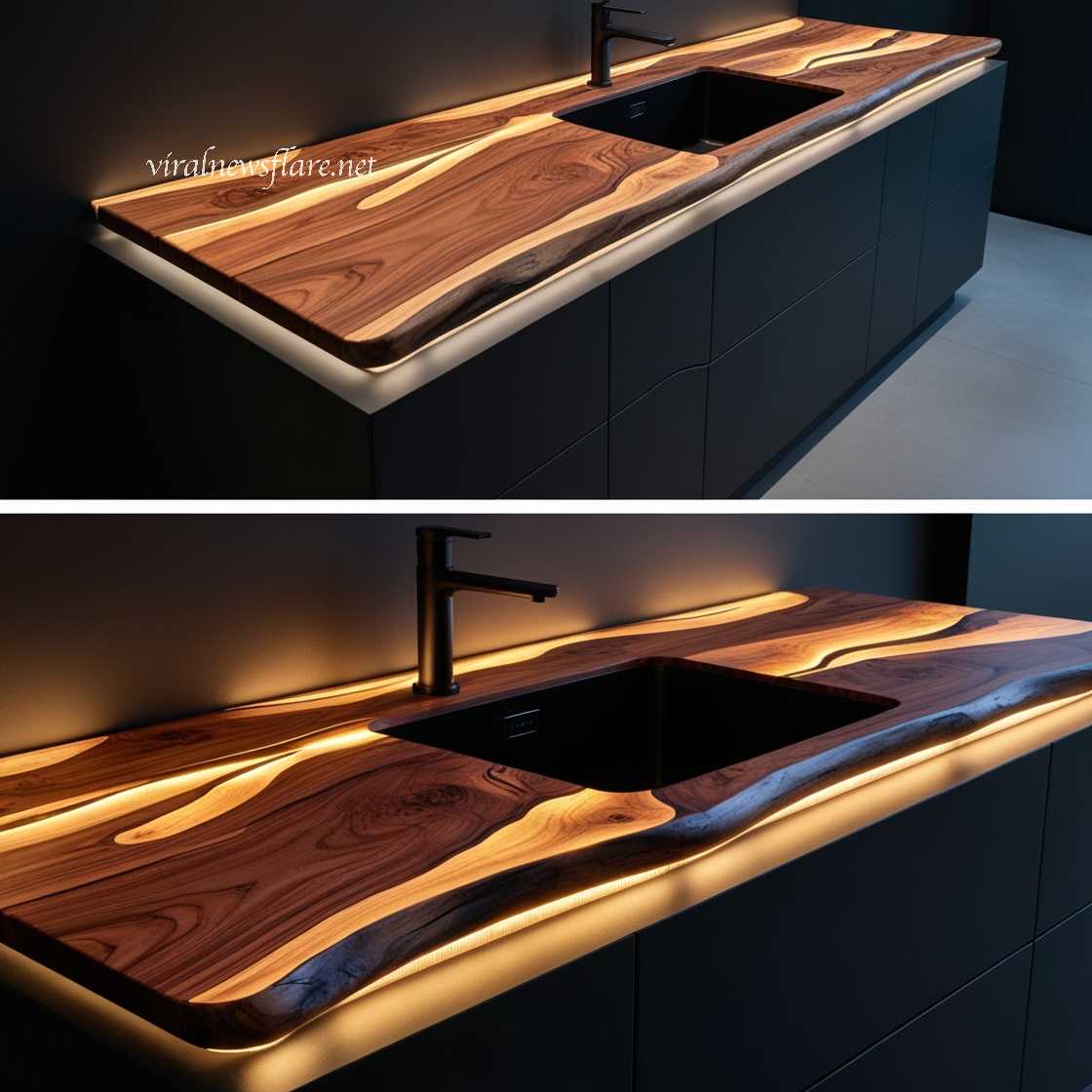
3. Backlighting and Edge Lighting
Different lighting techniques can be employed in Illuminating Wood Countertops. Backlighting involves placing lights behind the countertop surface, creating a soft glow that emanates from beneath. Edge lighting, on the other hand, involves placing lights along the edges of the countertop, highlighting its shape and adding a subtle accent to the surrounding area.
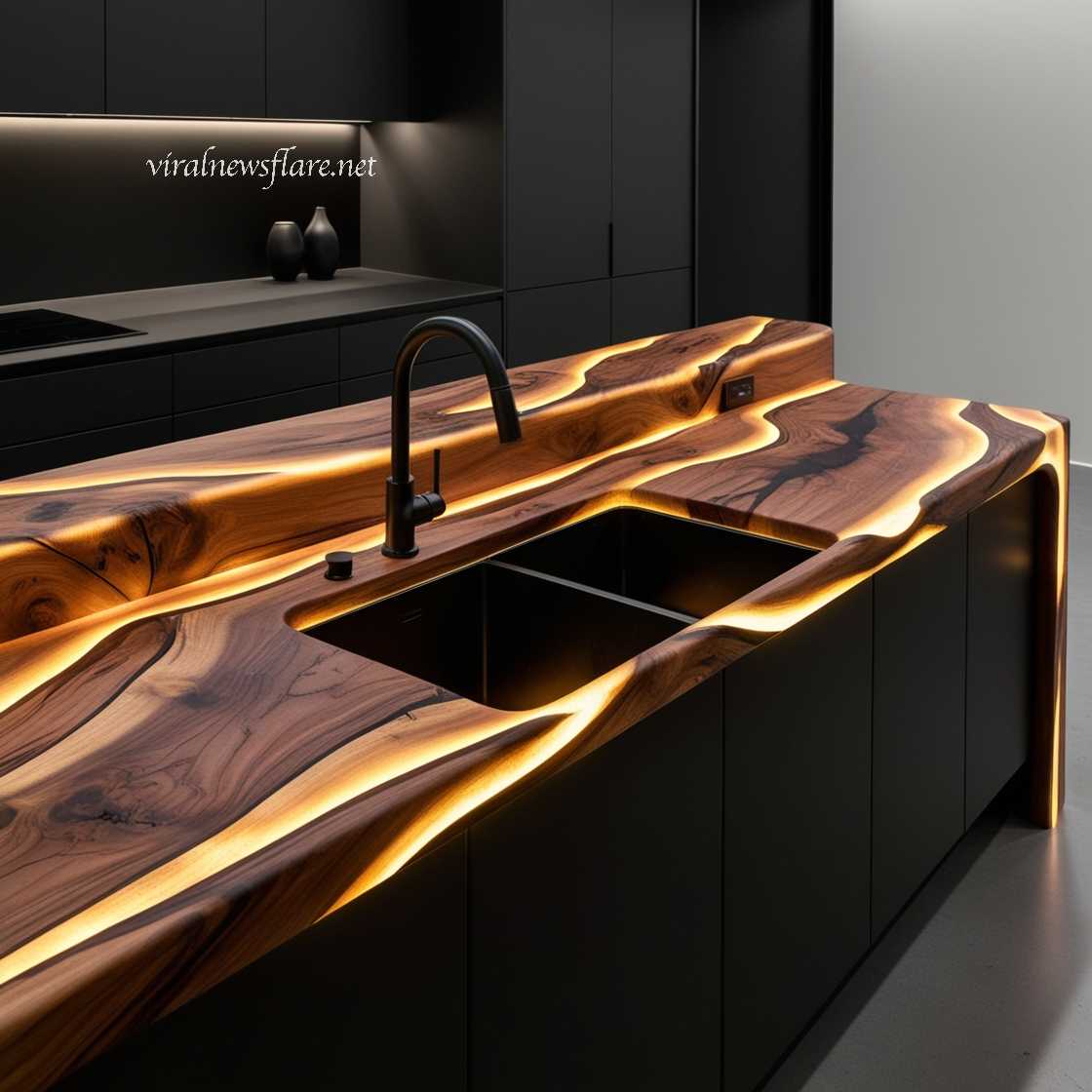
4. Integrated Lighting Fixtures
The lighting fixtures used in Illuminating Wood Countertops are seamlessly integrated into the design, ensuring that the light sources are discreet and do not detract from the overall aesthetic. This integration maintains the clean lines and minimalist look that many homeowners desire.
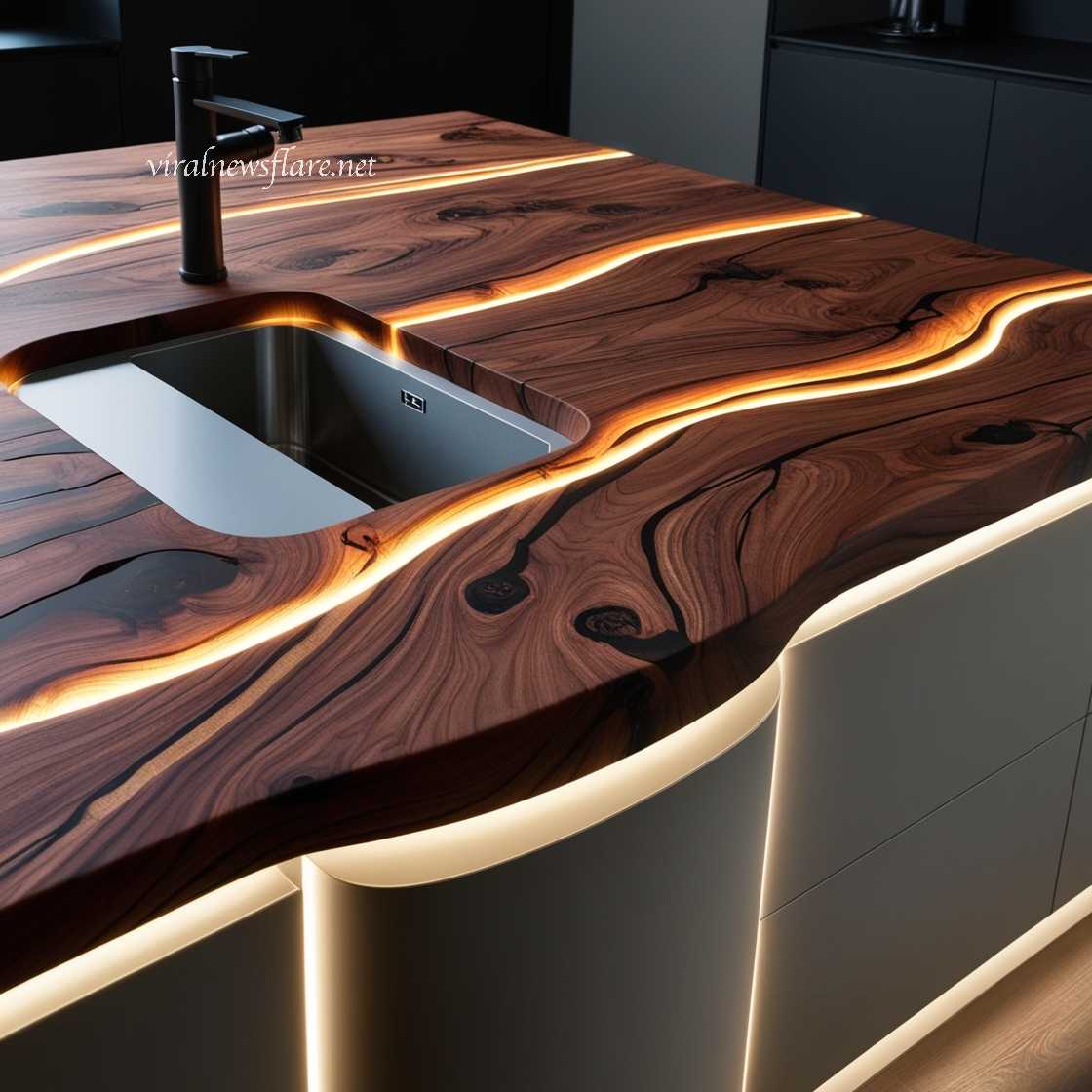
5. Layered Lighting Effects
By incorporating multiple lighting layers, such as task lighting combined with ambient lighting, Illuminating Wood Countertops can achieve a balanced and functional lighting scheme. This layering allows for versatility in lighting levels, catering to different activities and settings within the space.
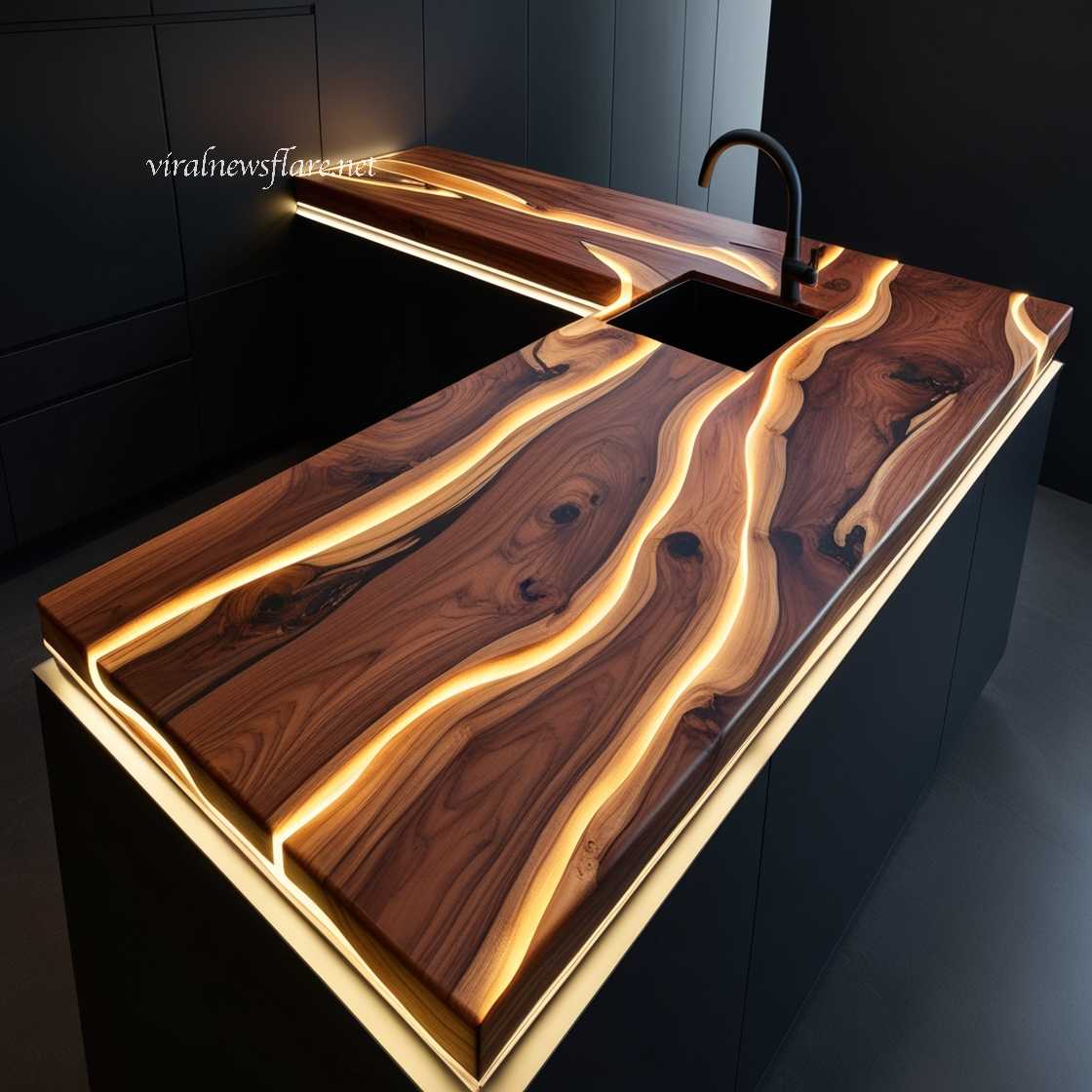
Types of Wood Used in Illuminating Wood Countertops
1. Hardwoods vs. Softwoods
When selecting wood for Illuminating Wood Countertops, the choice between hardwoods and softwoods is crucial. Hardwoods like oak, maple, and walnut are preferred for their durability and resistance to wear and tear. Softwoods, while generally less durable, can also be used for specific design aesthetics and may be more cost-effective.
2. Exotic Woods
Exotic woods such as teak, mahogany, and cherry offer unique grain patterns and colors, adding a distinctive touch to Illuminating Wood Countertops. These woods are often chosen for high-end applications where a luxurious and exotic appearance is desired.
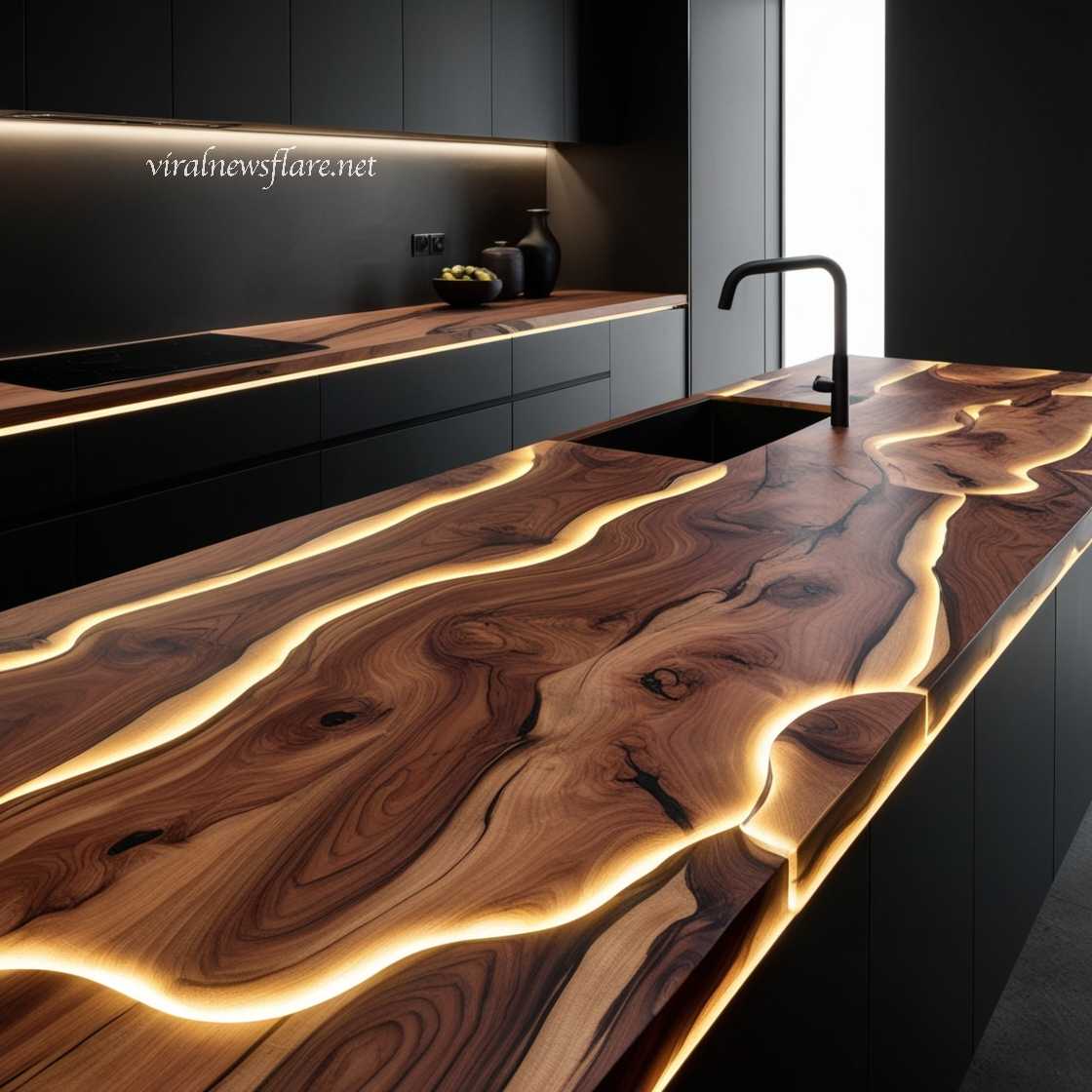
3. Sustainably Sourced Wood
With increasing awareness of environmental sustainability, many homeowners opt for Illuminating Wood Countertops made from sustainably sourced wood. Certifications like FSC (Forest Stewardship Council) ensure that the wood used is harvested responsibly, minimizing environmental impact.
4. Engineered Wood
Engineered wood products, such as plywood or laminated wood, can also be used in Illuminating Wood Countertops. These materials offer enhanced stability and resistance to moisture, making them suitable for kitchen environments where exposure to liquids is common.
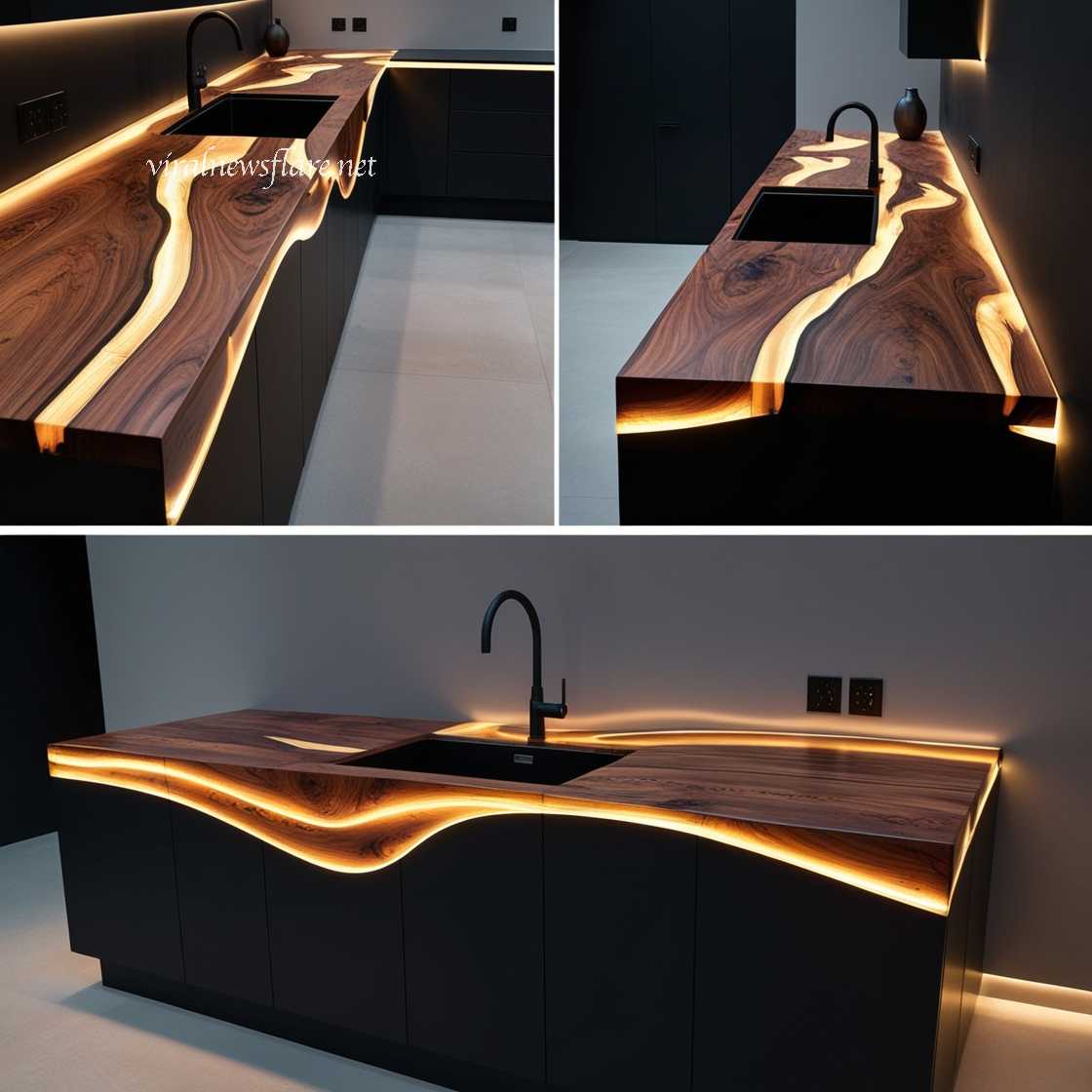
5. Reclaimed Wood
For those seeking a more rustic or vintage look, reclaimed wood is an excellent choice. Illuminating Wood Countertops made from reclaimed wood not only provide a unique aesthetic but also promote sustainability by repurposing existing materials.
Incorporating Lighting Elements
1. LED Strip Lighting
LED strip lighting is a popular choice for Illuminating Wood Countertops due to its flexibility and low heat emission. These strips can be easily concealed within the countertop structure, providing even and consistent lighting without visible fixtures.
2. Fiber Optic Lighting
Fiber optic lighting offers a discreet and modern solution for Illuminating Wood Countertops. By transmitting light through thin fibers, this technology allows for precise placement of light points, creating intricate and customizable lighting patterns.
3. Under-Edge Lighting
Under-edge lighting involves placing lights beneath the countertop edges, casting a gentle glow upwards. This technique not only highlights the countertop’s perimeter but also adds a subtle ambient light to the surrounding area.
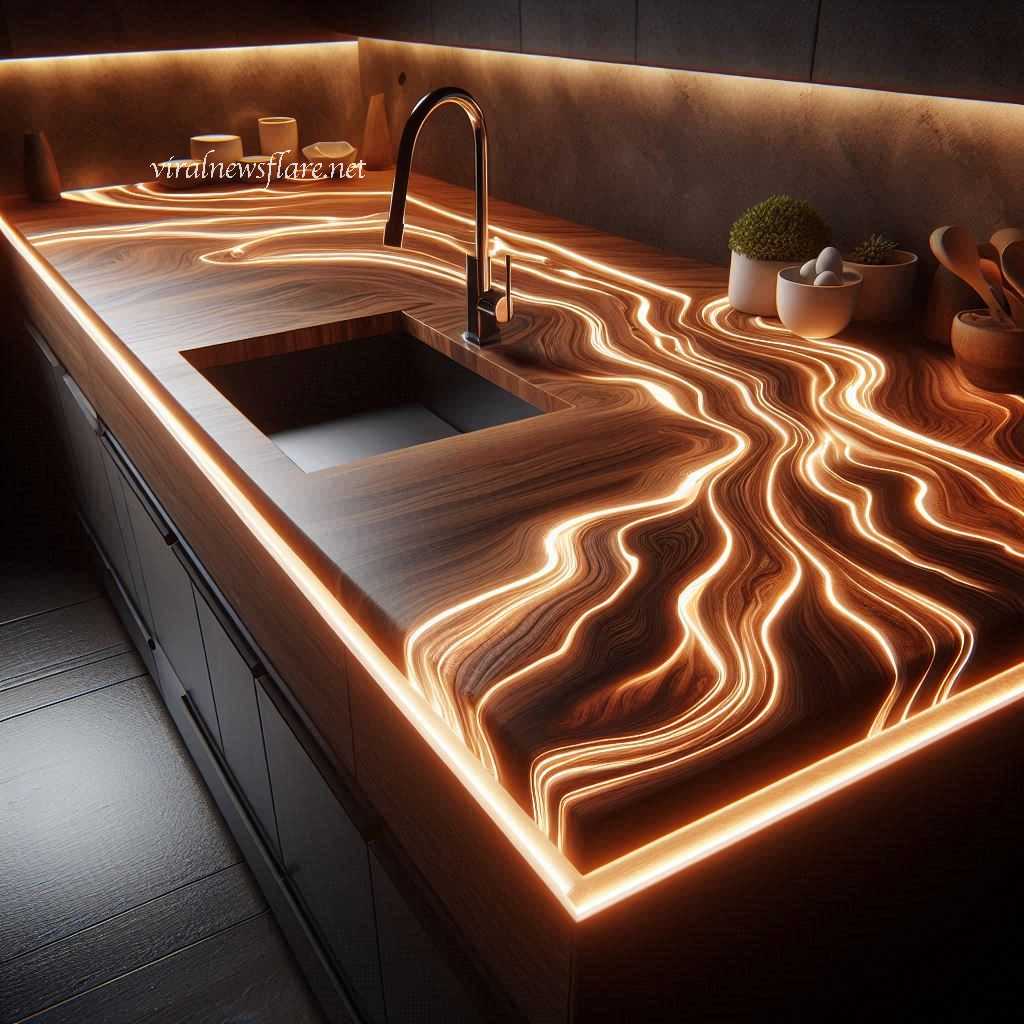
4. Backlighting Panels
Backlighting panels integrated into Illuminating Wood Countertops provide a soft and diffuse light source that enhances the countertop’s depth and texture. These panels can be customized to fit the specific dimensions and design requirements of the countertop.
5. Smart Lighting Integration
Modern Illuminating Wood Countertops can incorporate smart lighting systems, allowing for remote control and automation. Features such as dimming, color changes, and scheduled lighting can be managed through smartphones or voice-activated assistants, offering convenience and enhanced functionality.
Installation Process
1. Planning and Design
The installation of Illuminating Wood Countertops begins with meticulous planning and design. This involves selecting the appropriate wood type, determining the layout of lighting elements, and ensuring that the countertop dimensions fit the designated space. Collaborating with a professional designer or installer can help achieve the desired outcome.
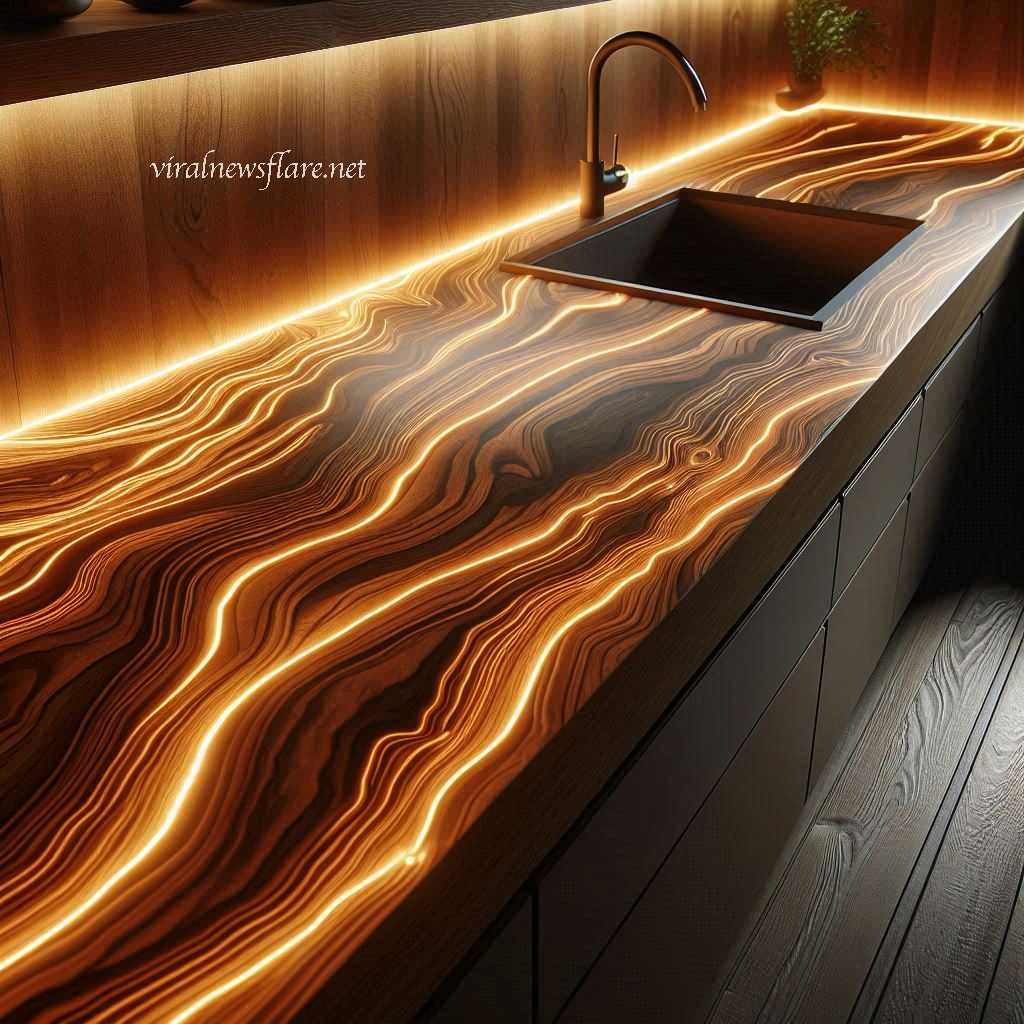
2. Electrical Considerations
Integrating lighting into wood countertops requires careful electrical planning. This includes ensuring adequate power sources, managing wiring discreetly, and adhering to safety standards. It’s essential to work with a licensed electrician to handle the electrical aspects of the installation.
3. Fabrication
Once the design is finalized, the countertop is fabricated to exact specifications. This process involves cutting and shaping the wood, installing lighting elements, and assembling the countertop components. Precision is crucial to ensure that the lighting is seamlessly integrated and functions correctly.
4. Installation
The fabricated Illuminating Wood Countertops are then installed in the designated space. This step requires precise fitting to ensure that the countertop aligns perfectly with cabinets, appliances, and other fixtures. Proper installation is vital for both the aesthetic appeal and functionality of the countertop.
5. Testing and Final Adjustments
After installation, the lighting system is tested to ensure it operates as intended. Any necessary adjustments are made to optimize lighting placement, brightness, and color temperature. This final step ensures that the Illuminating Wood Countertops perform flawlessly and meet the homeowner’s expectations.
Maintenance and Care
1. Cleaning
Regular cleaning is essential to maintain the beauty and functionality of Illuminating Wood Countertops. Use a soft, damp cloth to wipe down the surface, avoiding abrasive cleaners that can damage the wood finish. For stubborn stains, mild soap solutions can be used, followed by drying with a clean cloth.
2. Protecting the Wood
To preserve the wood’s integrity, it’s important to protect Illuminating Wood Countertops from excessive moisture, heat, and direct sunlight. Using cutting boards, trivets, and coasters can prevent scratches, burns, and discoloration. Applying a high-quality wood conditioner or sealant periodically can also help maintain the wood’s appearance.
3. Lighting Maintenance
The integrated lighting systems in Illuminating Wood Countertops require minimal maintenance. However, it’s advisable to check the lighting elements periodically to ensure they are functioning correctly. Replacing LED strips or bulbs should be done carefully to avoid damaging the countertop’s structure.
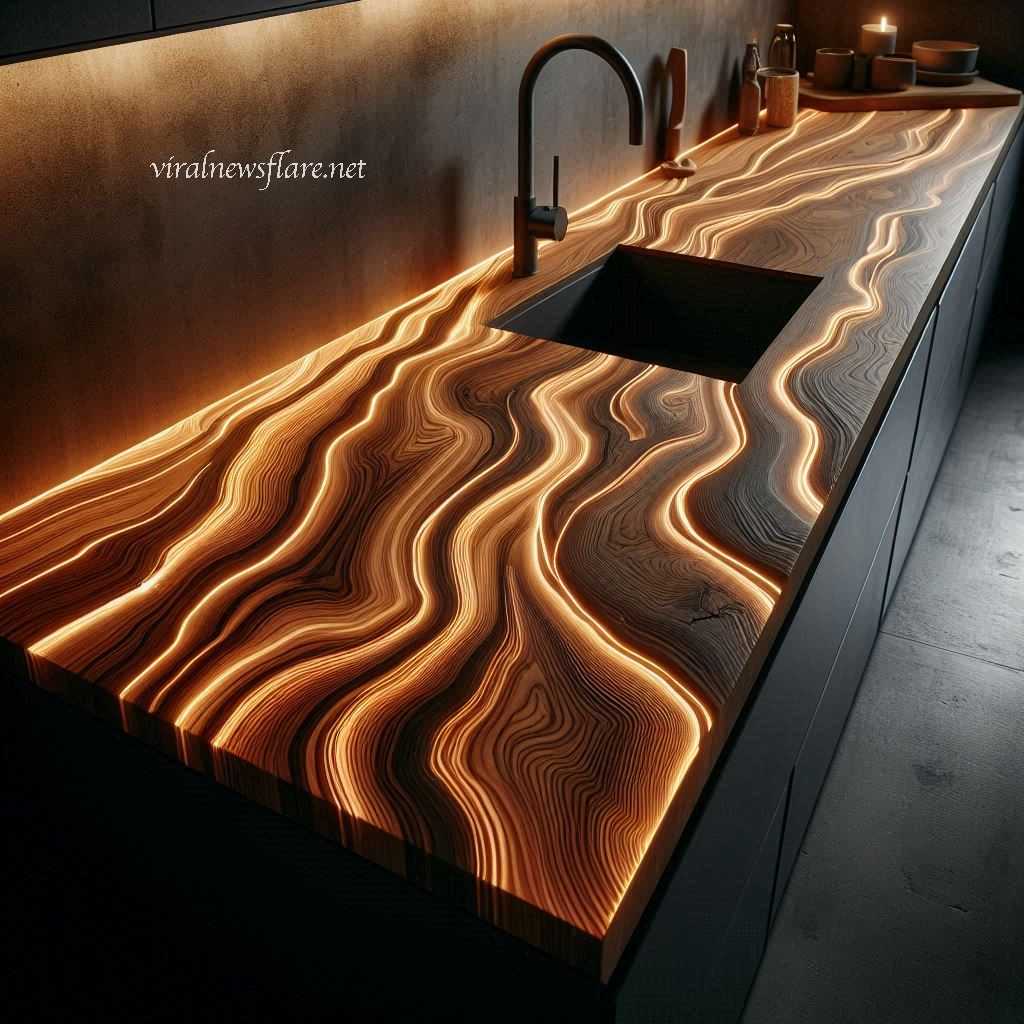
4. Preventing Wear and Tear
Avoid placing heavy objects on Illuminating Wood Countertops to prevent dents and scratches. Additionally, promptly addressing spills and stains can prevent permanent damage to the wood surface. Regular inspections can help identify and address minor issues before they escalate.
5. Professional Servicing
For more extensive maintenance or repairs, it’s recommended to consult with professionals who specialize in wood countertops and integrated lighting systems. They can provide expert advice and services to ensure that your Illuminating Wood Countertops remain in optimal condition.
Cost Considerations
1. Material Costs
The cost of Illuminating Wood Countertops varies depending on the type of wood chosen. Exotic and reclaimed woods tend to be more expensive due to their unique qualities and sourcing challenges. Engineered wood options may offer a more budget-friendly alternative without compromising on durability and aesthetics.
2. Lighting System Expenses
Integrating lighting into wood countertops adds to the overall cost. The choice of lighting technology—such as LED strips, fiber optics, or smart lighting systems—can influence the price. Higher-end lighting options with advanced features will naturally increase the investment required.
3. Customization and Design Complexity
Custom designs that involve intricate lighting patterns or unique wood configurations will typically cost more than standard installations. The level of customization desired will directly impact the labor and material costs associated with Illuminating Wood Countertops.
4. Installation Costs
Professional installation is crucial for ensuring the proper functionality and aesthetic appeal of Illuminating Wood Countertops. Labor costs can vary based on the complexity of the installation, the region, and the expertise of the installers. It’s advisable to obtain multiple quotes and consider the reputation of the service providers.
5. Long-Term Investment
While Illuminating Wood Countertops may have a higher initial cost compared to traditional countertops, their durability, energy efficiency, and potential to increase property value make them a worthwhile long-term investment. Proper maintenance can extend their lifespan, maximizing the return on investment.
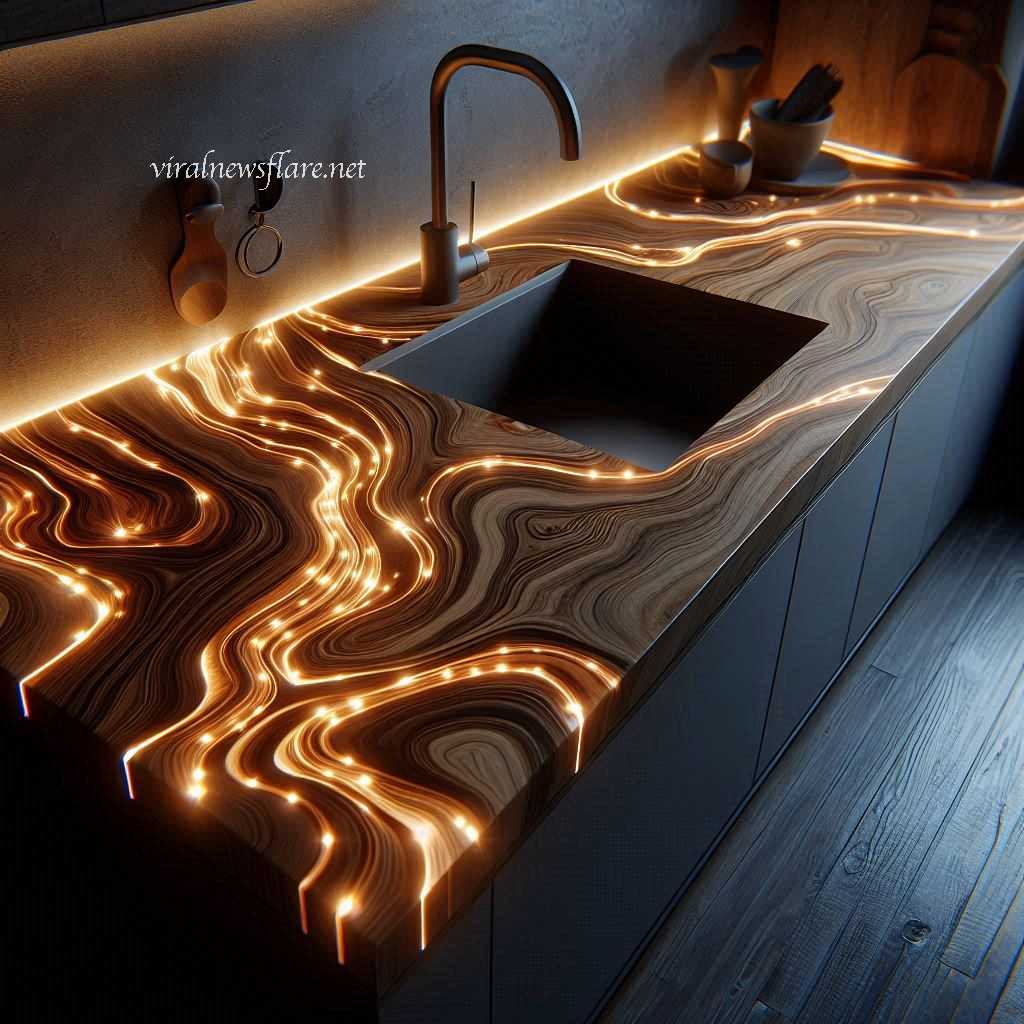
Sustainability and Environmental Impact
1. Sustainable Wood Sourcing
Choosing Illuminating Wood Countertops made from sustainably sourced wood helps minimize environmental impact. Certifications such as FSC ensure that the wood is harvested responsibly, supporting forest conservation and reducing deforestation.
2. Energy-Efficient Lighting
The use of energy-efficient lighting technologies, like LEDs, in Illuminating Wood Countertops contributes to lower energy consumption and reduced carbon footprint. These lighting options not only save energy but also have a longer lifespan, decreasing the frequency of replacements and waste.
3. Reclaimed and Recycled Materials
Incorporating reclaimed wood in Illuminating Wood Countertops promotes recycling and reduces the demand for new timber. This practice supports sustainable building practices and adds a unique character to the countertops.
4. Low-VOC Finishes
Selecting low-VOC (volatile organic compounds) finishes and sealants for Illuminating Wood Countertops enhances indoor air quality and reduces the release of harmful chemicals into the environment. This is beneficial for both the environment and the health of the inhabitants.
5. End-of-Life Considerations
Designing Illuminating Wood Countertops with end-of-life considerations in mind ensures that materials can be recycled or repurposed at the end of their lifespan. This approach supports a circular economy and reduces waste.
Illuminating Wood Countertops are a testament to the seamless blend of natural beauty and technological innovation. They offer a unique solution for those seeking to enhance their living spaces with a combination of elegance, functionality, and sustainability. From the rich textures of various wood types to the subtle integration of advanced lighting systems, these countertops provide endless possibilities for customization and design expression.
Investing in Illuminating Wood Countertops not only elevates the aesthetic appeal of a space but also contributes to its functionality and overall ambiance. With proper planning, professional installation, and regular maintenance, these countertops can serve as a stunning focal point in any room, adding both value and beauty to your home or workspace.
Whether you are renovating your kitchen, designing a new office, or looking to add a touch of sophistication to your living area, Illuminating Wood Countertops offer a versatile and enduring solution that stands the test of time. Embrace the fusion of nature and light, and transform your space with the timeless charm of wood enhanced by illuminating brilliance.

